Freewheeling
Explore the scientific concepts of mass, friction and potential and kinetic energy.
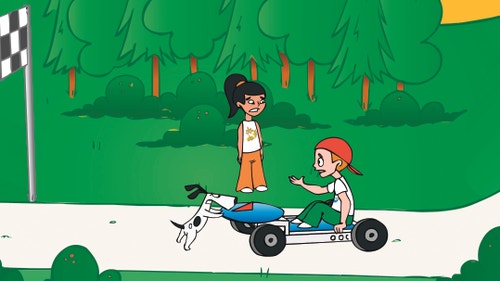
Connect
(5-10 Minutes)
Jack and Jill are arguing as usual. They are making carts to see which one can roll the furthest down Launching Hill in their local Greenall Park.
Jill says that if she puts some extra weight (Zog the Dog) on her cart, she will roll further because the cart is heavier. Jack thinks that because heavy loads are hard to move, he will go further. He prefers to go for bigger wheels, but Jill is not so sure this approach will help.
Which will roll further? Heavier or lighter carts, with bigger or smaller wheels?
Let’s find out!

Construct
(20-25 Minutes)
Make Launching Hill
Draw a start line, 1 meter (≈ 1 yard) from one end of the plank. Place a support so that the start line is 15 cm from the floor.
Why do we need a start line?
We need it to ensure that all tests are fair; all carts should roll down exactly the same ramp.
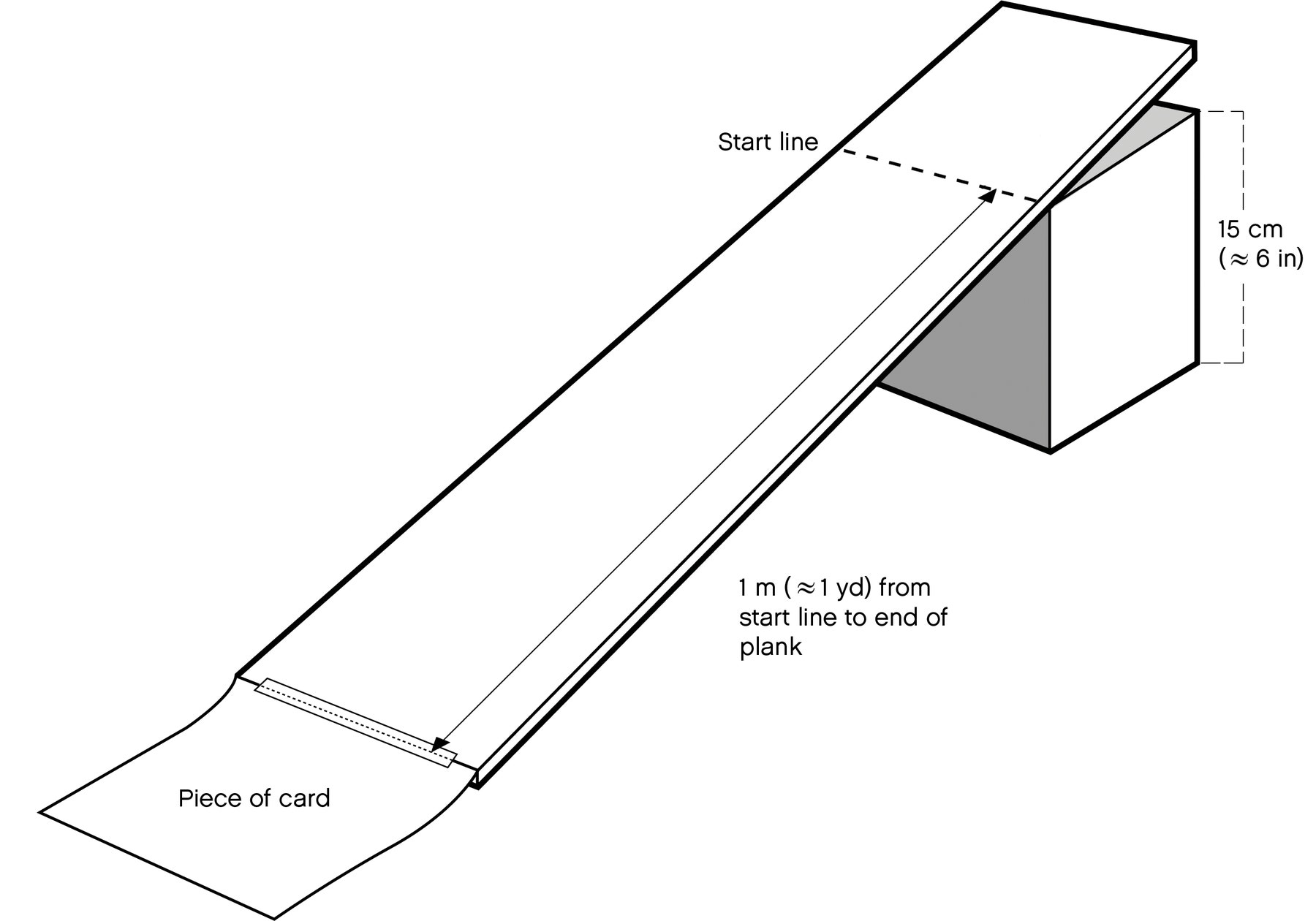
Tip
If the thickness of the plank causes the carts to bump down from it onto the floor, use a piece of card to make a smooth transition from plank to floor.
Build the Freewheeler
(all of book 3A and book 3B to page 6, step 12)
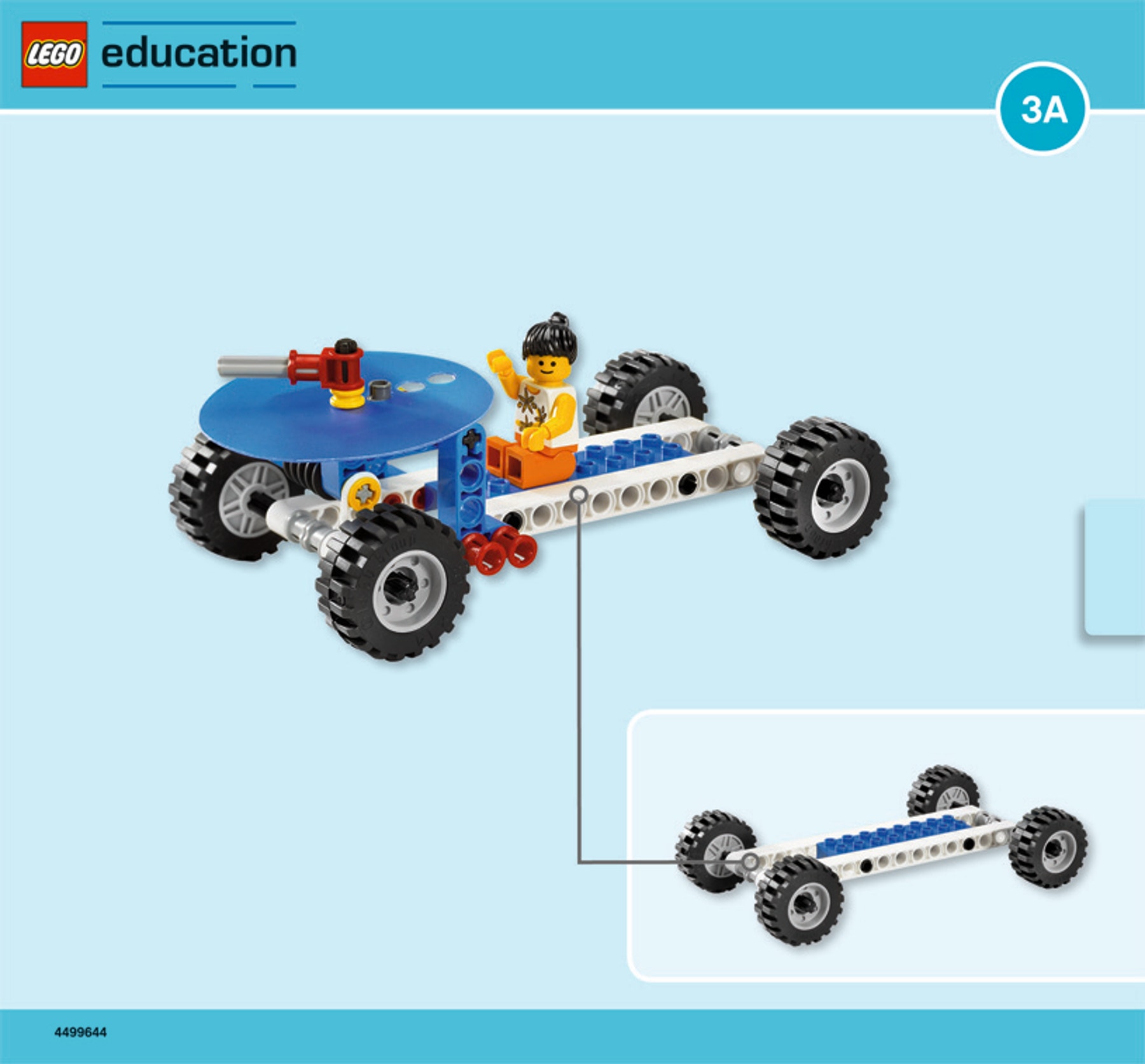
Test the freewheeler on the ramp. Is the model running smoothly? If not, check all axles and bushings to make sure the wheels are turning smoothly. Also check that all elements are firmly linked to one another.
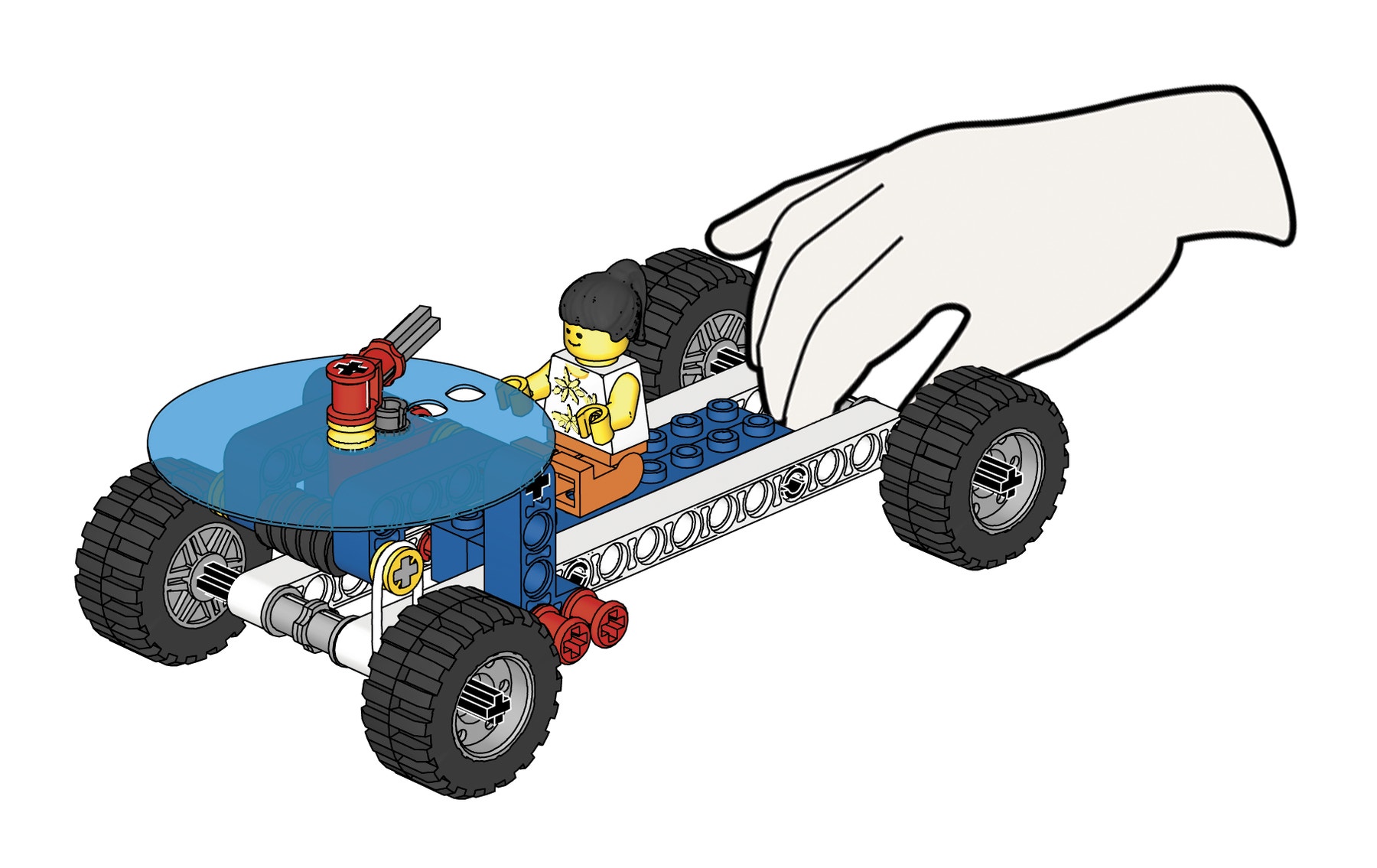
Trace the scale
Or cut out paper copies of the dial discs if you want to keep the original discs untouched.

Contemplate
(20-25 minutes)
Measure how far the empty cart rolls. Measure with a meter stick (or a yard stick) and compare with the pointer and dial. Record the distance and use a LEGO brick as a marker of where it stopped. Test at least three times to be sure you have made a scientifically correct answer.
An unloaded cart should roll about 160 cm (≈ 5.25 ft). This is more than once around the dial. The dial is accurate to within a few centimeters.
Trace the 1 m (≈ 1 yd) dial divisions on the plastic disc with an erasable whiteboard marker. Let the freewheeler go down the ramp again and see if it runs approximately 160 cm (≈ 5.25 ft) by looking at the dial and pointer (one full revolution of the disc and a little more than another half). Carry out several tests.
There is no need to use rulers or measuring tapes – just use the readings on the dial.
Tip
Don’t forget to reset the pointer prior to each test run!
Note that the dial measures almost exactly 1m (≈ 1yd) in one rotation.
This means that the pointer is at zero when the cart hits the floor.
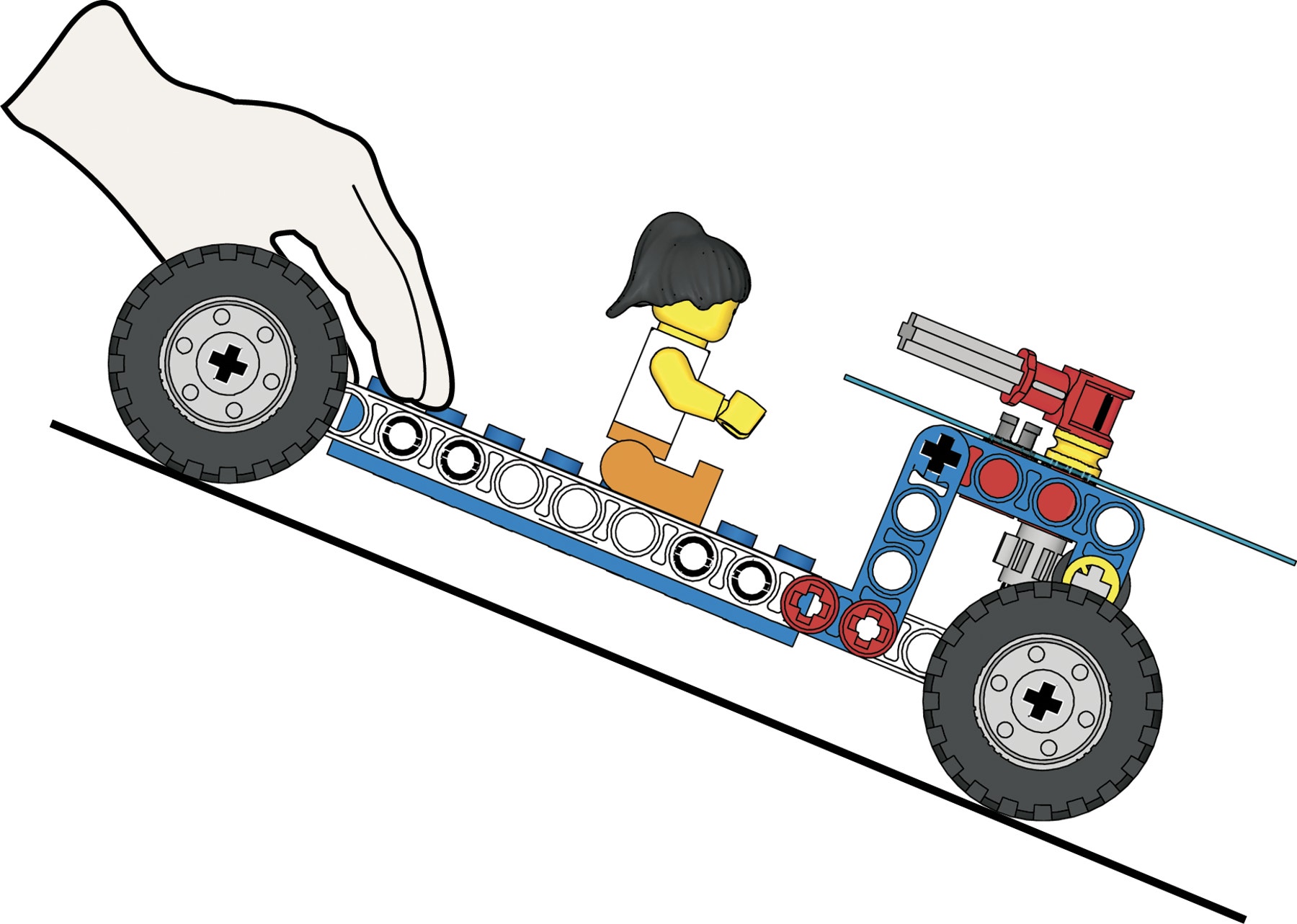
Add a weight brick to the cart (book 3B, page 7, step 13). Predict how far it will roll this time by placing another marker brick along the track.
Then test.
The cart will roll almost twice as far. The weight brick ‘falling’ with the cart gives it nearly twice as much moving energy. However, note too that extra weight creates extra friction or rubbing on the axles which slows down the cart.
What do you notice about the pointer?
The pointer goes around more than once. You will need to count how many times it goes around.
Test several times to make sure your findings are consistent.
Did you know?
The empty cart weighs about 58 g (≈ 2 oz). And the weight brick weighs 53 g (≈ 1.9 oz)... almost the same!
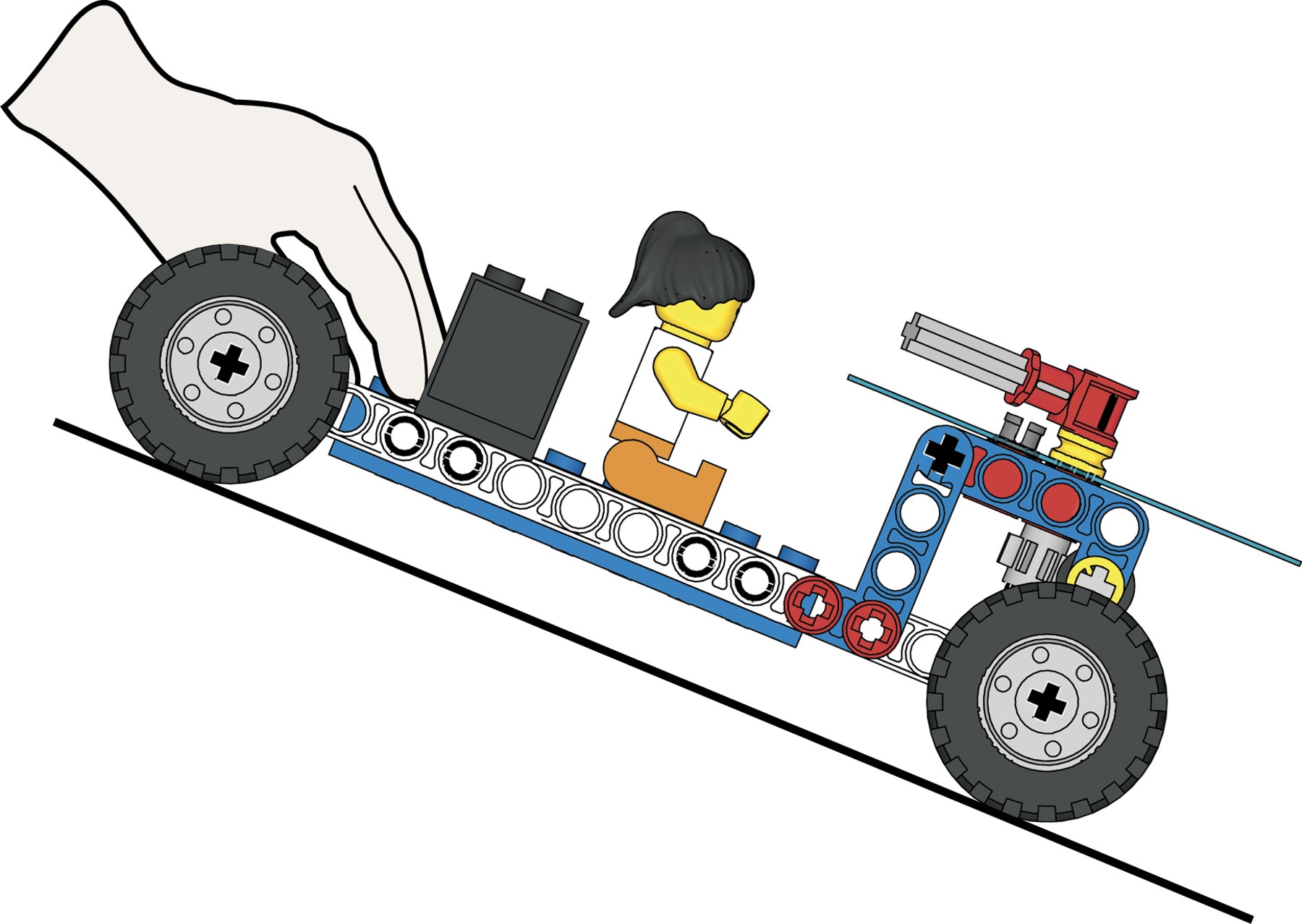
Jack’s Big Wheel Deal
Will big wheels help the cart to roll further than the smaller wheels? Fit them onto the rear axle and test on the ramp (book 3B, page 7, step 14).
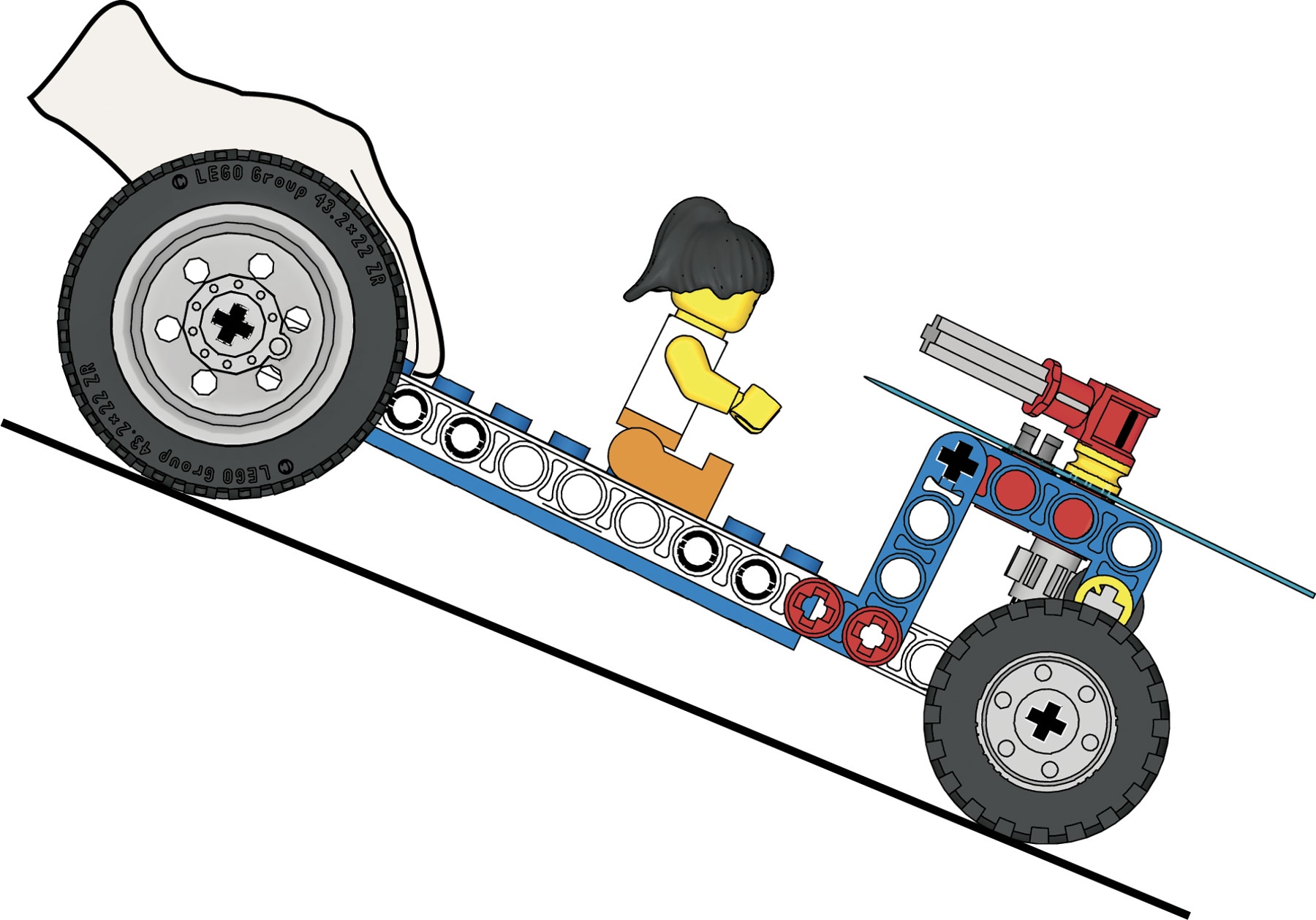
First test unloaded (book 3B page 7, step 14), then test loaded (book 3B, page 8, step 15).
The cart usually rolls further. There are two reasons: more weight = more energy, and the rear axle turns more slowly, which means less friction.
Did you know?
The big wheels weigh 16 g (≈ 0.5 oz) each and the small ones only 6 g (≈ 0.2 oz) each.

Continue
(25-30 Minutes)
Super Scale
Build book 3B to page 12, step 12.
Replace the 8-tooth gear wheel with the 24 tooth gear. Predict and then test how far the cart will roll before the pointer completes one revolution.
It rolls 3 meters (≈ 3 yards). The new gear wheel has 3 times as many teeth as the small one.
The worm gear has to turn 3 times as often to get the 24-tooth gear wheel to turn once. Now you will need to calibrate the scale to measure distances accurately to 3 meters (≈ 3 yards).
Super Slope
Predict first and then test what will happen if you double the height of the hill.
You double the potential energy, double the moving energy, but do not double the axle friction.
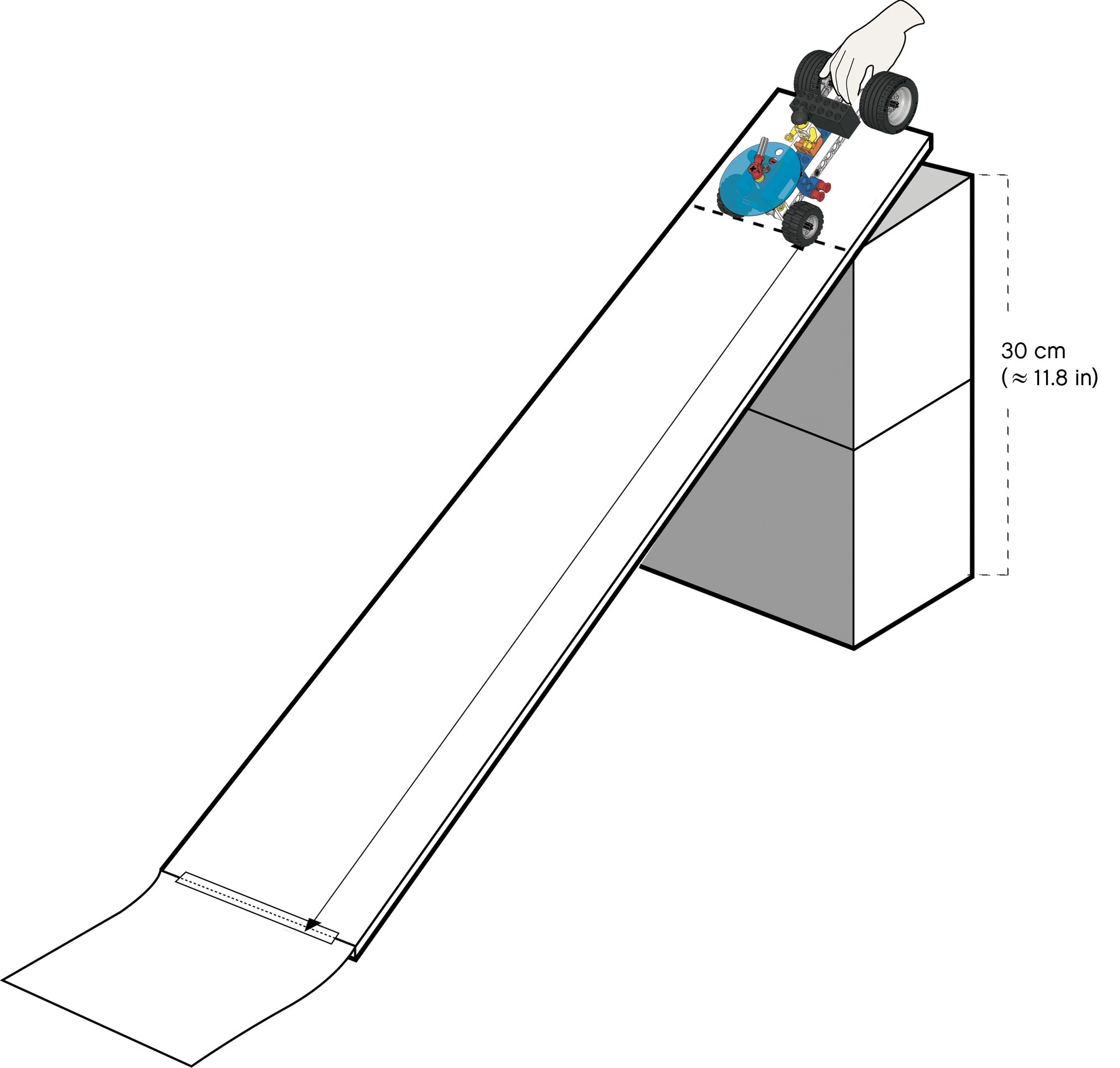
Teacher Support
Students will explore the concepts of:
Scientific investigation
Potential and kinetic energy
Mechanisms – wheels and axles
Friction
Formal and informal distance measuring
9686 Simple & Powered Machines Set (two students per set recommended)
4 meters (≈ 4 yards) of smooth floor
Masking tape
Meter stick (yard stick) or measuring tape
Plank of wood or shelf at least 1 meter (≈ 1 yard) long
Pile of books or boxes to elevate the plank
Spare LEGO® bricks for taking measurements
Whiteboard marker
Scissors
NGSS
Disciplinary Core Ideas: Physical Science
MS-PS2 Motion and Stability: Forces and Interactions
Crosscutting Concepts
Stability and change
Science and Engineering Practices
Developing and using models
Planning and carrying out investigations
Constructing explanations and designing solutions
Common Core Mathematics Standards
7.RP.A / 6.NS.B / 6.EE.C / 7.EE.B / 8.EE.B / 8.F.B / 6.SP.A
Common Core English Language Arts
SL 6.1 / 6.2 / 7.1 / 7.4 / 8.1
RST 6-8.3 / 6-8.4 / 6-8.7
WHST 6-8.1 / 6-8.7 / 6-8.8 / 6-8.9
Student Material
Share with:
 Google Classroom
Google Classroom